J. K. Birksted
Le Corbusier and the Occult
MIT Press
416 pages, 9 x 11 ½ inches
ISBN 978 0262026482
Charles-Edouard Jeanneret, alias Le Corbusier, borrowed, plagiarized and instrumentalised the ideas and symbols of Swiss and French Freemasonry and trade guilds, the compagnonnages.
The ruling elites of La Chaux-de-Fonds (where Jeanneret lived for the first thirty years of his life before moving to Paris), as well as those of the Third Republic in Paris, belonged to Masonic lodges. So this was for him a clever way of getting in on the act and of obtaining commissions. After all, architects want work and celebrity status. But, unlike other artists and intellectuals such as Juan Gris and Paul Dermée, who did belong to Masonic lodges and were devoted to their rituals and ideas, Jeanneret operated their ideas and symbols instrumentally. Jeanneret believed in one thing only: Le Corbusier!
But my book is about several other related things too. Let me explain.
First, it has always been said, and is indeed still said, that Le Corbusier’s architecture is so incredibly complex that the only thing we can do is to individually track each one of the infinite meanings and sources that make up its eclectic nature, without relating them to each as a coherent whole. It is always repeated that to do so would be reductive. It is thereby implied that Le Corbusier’s work is the inexplicable creation of an inscrutable genius. Now, this is of course exactly what they all—from Frank Lloyd Wright to Le Corbusier via Cézanne, Jackson Pollock and so forth—wanted us to believe. It is in the very nature of modernist originality to want to hide its trail and make us believe in individual geniuses beyond analysis.
Le Corbusier was a master of the trade of public relations and deceit. He set up and vetted his own archives. He made sure to make friends in powerful places to insure the preservation of his key buildings by heritage legislation. He hustled museums to make sure his paintings would be in public collections. And so on. He was not always the mighty Le Corbusier from the Parisian City of Light but indeed a little provincial from an obscure Swiss town who had a lot of trouble being taken seriously in Paris.
My book shows that Jeanneret’s work is not an impenetrable, unpredictable and ad hoc assemblage, but a carefully structured opus that in-depth research can crack open. My book sets out to find the structures of the multiple references, meanings and sources of Jeanneret’s art and architecture. Indeed, when you check in the dictionary exactly what the word “eclectic” means, you find “multiple references according to a structured system.” I am arguing that Jeanneret’s work is not heteroclite, as is implied by people who say his work is incomprehensible, but coherently eclectic—serious research can describe the ideological and symbolic structure that runs through it. And that is what I set out to do.
But I am arguing something else too, which is important to understand. I have been accused of being cynical because I assert that Jeanneret did not believe in these ideas. I do not know if Jeanneret believed in the ideological and symbolic ideas that underlie his art, architecture and his books, because I do not have access to his brain. Also, he was a strategic and manipulative self-publicist in his obsessive search for the modernist holy grail of becoming an “original genius,” so he used ideas to ingratiate himself to get commissions and publicity as well as in the hope of becoming an historical legend. In that respect, the creation of his legend is the true mark of his genius!
So, to get back to the point: Did he believe in the main ideas that structure his eclectic art and architecture? Perhaps sometimes he did and sometimes he did not, as the wind blew. There is no way of knowing. The evidence is contradictory. I can only look at material outputs (art, architecture and publications) and recorded behavior in order to observe recurring patterns in his life and work. My book is not some imaginary psycho-sexual biography. Le Corbusier and the Occult seeks to understand symbolic and behavioral structures as a way towards understanding architectural and spatial qualities.
In order to do so, I had to devise investigative research methods. This is probably more interesting to researchers then to general readers. But chess-players might appreciate the joys of devising tactics within the rules of the game in order to beat the opposition, which, in this case, is the Jeanneret legend’s claim that he is wholly original and as good as gold.

Jeanneret’s work is not heteroclite, as is implied by people who say his work is incomprehensible, but coherently eclectic—serious research can describe the ideological and symbolic structure that runs through it.
I have had some enraged responses from knee-jerk modernists. Their reaction relates to the actual ideas that this book is about, which is that in order to understand Jeanneret we have to step outside the Anglo-Saxon frame of mind and get under the skin of francophone Swiss and French culture. So, Le Corbusier and the Occult is also about the importance of understanding other people, other ways of being, other cultures.
When Jeanneret was in shorts and until he definitively moved to Paris at the age of 30 in 1917, La Chaux-de-Fonds was the world’s leading watch-making town, selling watches to America, Russia, Latin America, etc. La Chaux-de-Fonds, for example, had the contract for supplying watches to the Russian army. There were enormously wealthy watch-factory owners in La Chaux-de-Fonds. They were often Jewish. Not only were they rich, they were also intellectual, interested in art, architecture, literature and music. They bought paintings from Jeanneret’s best friend, Charles Humbert. They commissioned interior designs, furniture and architecture from the young Jeanneret.
The commercial, political and administrative ruling classes of La Chaux-de-Fonds also included Catholics and Protestants and Muslims. La Chaux-de-Fonds was an ethnic and cultural melting-pot. (As well as a socially explosive place with strikes, riots and military interventions; Lenin and Bakounin were there.) At the same time, La Chaux-de-Fonds had hundreds of civic clubs and societies and circles, from skiing via knitting and Esperanto to politics. There was, however, one exclusive club which crossed religious and ethnic boundaries within the ruling and bourgeois classes: the Freemasonic lodge, La Loge L’Amitié. Across political, religious and ethnic divisions, businessmen and politicians and administrators could talk to each other inside the Masonic lodge. The municipal City architects, whom Jeanneret tried to cozy up to, belonged to it, as did the municipal City engineers. Everyone in La Chaux-de-Fonds knew about the lodge since it played a very important role as a source of charity (the first daycare centre for the children of poor working mothers; soup kitchens; funding for hospitals) and of funding for the arts (the art museum and the elegant Italianate theatre, both of which still exist today).
Jeanneret was friends with key lodge members such as Léon Gallet, whom he praises in his autobiography (Le Corbusier lui-même, ghostwritten by Jean Petit). The watch-enameling atelier of Jeanneret’s father was in the building next to the Masonic lodge. His aunt, Tante Pauline, lived next to the lodge too. Jeanneret wrote to Charles L'Eplattenier about becoming a member. His father, who was President of the Club Alpin Suisse (loosely comparable to the National Rifle Association), was invited there to speak at banquets. Jeanneret’s uncle, Sully Guinand, who played a key role in the finances of the Jeanneret family, was a lodge member.
Now, there is something that Anglo-Saxons find really difficult, or impossible, to understand. French and Swiss lodges were not stuffy establishment institutions. They were often radical, socialist and atheist. A friend of Jeanneret, Edouard Quartier-la-Tente, who was an internationally respected Freemason, was known for his extreme, outspoken and revolutionary ideals about equality and education. Another local Freemason, Elie Ducommun, was in receipt of a Nobel Peace Prize (1902). Lodge members were often intellectuals and politically engaged.
So, which ideas and symbols did these Masonic lodges operate with? They used the traditional Masonic symbols of the right-angle and the compass. (Think of Jeanneret’s poem, The Poem of the Right Angle. Can you see right-angles and compasses in it?) They worked with the smooth versus the rough, which were symbols of how humans should work on their own personalities to become more tolerant and better people—in Masonic language, “to polish your stone.” (Remember the importance of smooth and rough textural surfaces in Jeanneret’s architecture, from the smooth International Style to béton brut?) Le Corbusier and the Occult documents many other such symbolic features too.
But—and this is fundamental—a central francophone Freemasonic tenet is that of eclecticism. Their symbolic rituals and images are deliberately and intentionally eclectic, which is part of a belief in the importance of encompassing other traditions, cultures and ways of being. And eclecticism, of course, is part of the very structure of Charles-Edouard Jeanneret’s art and architecture. Thus eclecticism is not what makes Jeanneret’s work inexplicable—it is precisely its basic structural feature. The eclecticism of Jeanneret’s art and architecture is isomorphic to a symbolic system that is also eclectic.
But how did I come across these ideas? Why am I the first researcher to be granted access to the archives of the Masonic lodge in La Chaux-de-Fonds? Or to discover the hitherto un-researched archives of his friend, Janko Cádra, in the Slovak National Library?
Factors related to my own multinational and multicultural upbringing and multidisciplinary education are probably relevant. And I believe very strongly that art history, architectural history and cultural studies should all be linked together—as they are in the work of Jacob Burckhardt. Perhaps Marc Bloch’s classic book, The Royal Touch, is my model for Le Corbusier and the Occult. As Marc Bloch wrote: “We have so far been following the age-long vicissitudes of the royal miracle as far as the documentary evidence permits. In the course of our research, we have done our utmost to throw light upon the collective ideas and the individual ambitions which blended in a kind of psychological complex and led the kings of France and England to claim this wonderworking power, and their subjects to recognize it.”
Interior of the Masonic lodge of La Chaux-de-Fonds, La Loge L’Amitié
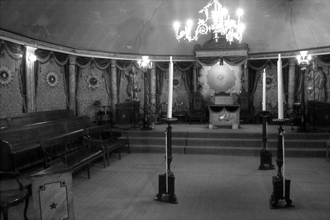
There are 170 illustrations in Le Corbusier and the Occult. And they are not just pretty pictures. Some of them tell stories in their right.
One reviewer said that he could not understand the relevance of such a picture as the late nineteenth-century photograph of a Chaux-de-Fonnier boy in a Biedermeier apartment, looking wistfully past the net-curtains at the world outside. And, yes, the boy in the photograph is not Jeanneret. But the photo is emblematic of what it would have been like for an ambitious child to grow up in exactly that kind of stifling petty bourgeois milieu in La Chaux-de-Fonds with its drapes, crystal gold-fish bowls, aspidistras and all the associated mental baggage: a domestic etui as described by Walter Benjamin.
Then there are photographs in the book that provide evidence and replace written text: these photographs reveal history. Such are the images of Masonic rituals.
Le Corbusier and the Occult is an intensely visual book. You can flip through it as if through a storyboard and you will get the narrative. I am deeply grateful to the MIT Press—and in particular to Roger Conover, my commissioning editor. It is a joint achievement, in fact, that Le Corbusier and the Occult became a “concept” book worth collecting—even if you were not to read all the words.

Eclecticism is not what makes Jeanneret’s work inexplicable—it is precisely its basic structural feature. The eclecticism of Jeanneret’s art and architecture is isomorphic to a symbolic system that is also eclectic.
I write in the introduction that it is now up to others to follow up the hypotheses, research methods, and historiographical approaches I outline, in order to prove, improve or disprove my research findings.
Hayden White (in his classic book, Metahistory) expresses the desire for a historiography that embodies contemporary ethical ideas. This book embodies my ethical ideas about the importance of historical research methodologies for cross-cultural understanding.
But I also hope that my Burckhardt-like notion of historiographical context will have an effect on architectural history and on our way of thinking about modernism in terms of its underlying regional cultures. There exist other cultures and other ways of being that must be considered and respected if we want to understand architecture.
In 1976, Isaiah Berlin said of Herder, another Freemason: “He deeply hates the forces that make for uniformity, for the assimilation, whether in life or in the books of historians, of one culture or way of life to another. He conscientiously looks for uniformities, but what fascinates him is the exception.”
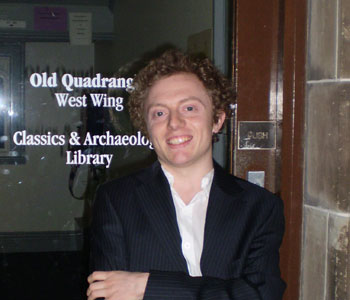
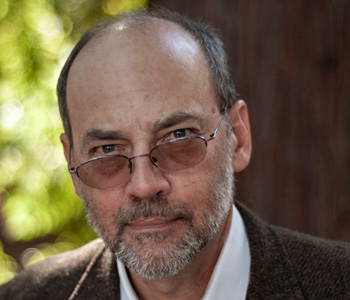
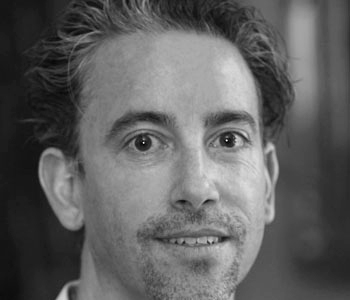
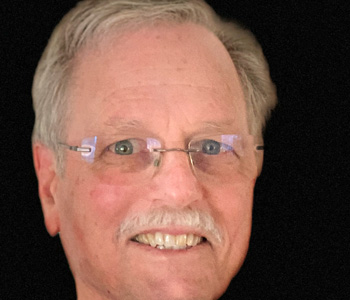
We don't put paywalls. We don't distract you with ads. We don't sell your data.
Please help to keep this running!